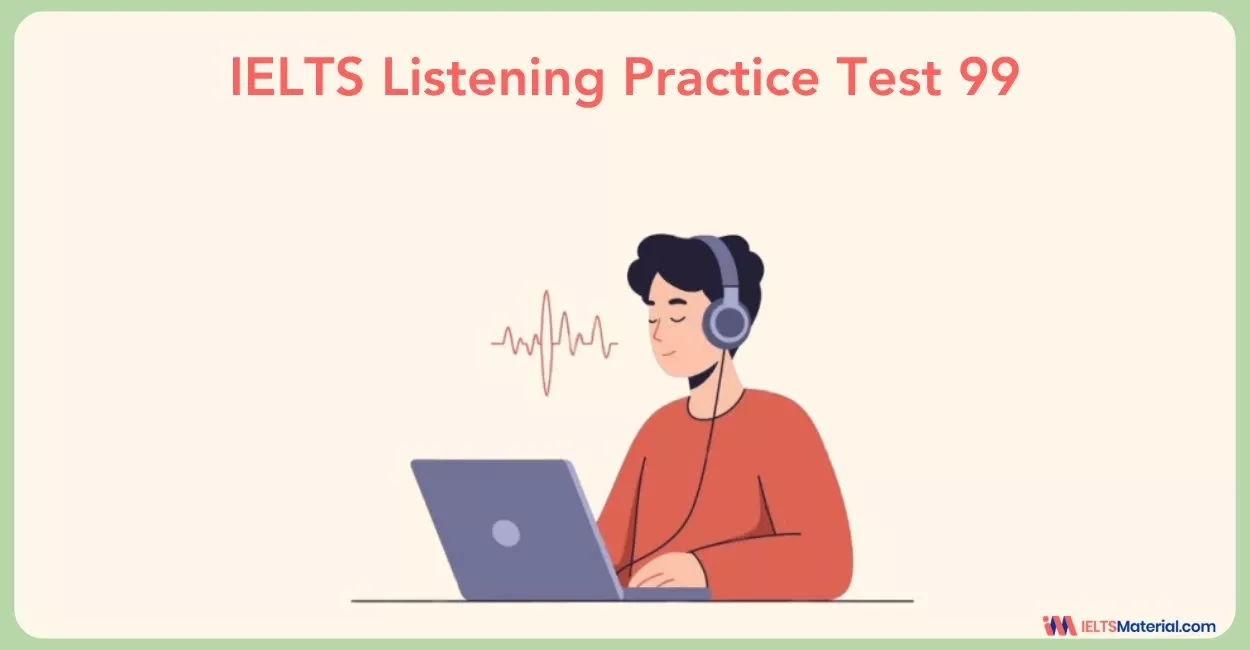Birth Statistics - IELTS Listening Answers
7 min read
Updated On
-
Copy link
In Birth Statistics IELTS Listening Answers, you will hear two friends planning to visit a friend of theirs who has just had a baby. Find the answers along with explanations & learn to handle different IELTS Listening questions types for an IELTS band 9.
Table of Contents
- Audio of Birth Statistics IELTS Listening Answers
- Questions of Birth Statistics IELTS Listening Answers
- Transcript of Birth Statistics IELTS Listening Answers Audio
- Answer Key of Birth Statistics IELTS Listening Answers
- Answers for Birth Statistics IELTS Listening Answers with Location and Explanations

Limited-Time Offer : Access a FREE 10-Day IELTS Study Plan!
Many IELTS candidates struggle with IELTS Listening distractors, paraphrased answers, and fast speech in the Listening test. Birth Statistics IELTS Listening Answers from IELTS Cambridge 3 Listening Test 4 will help you overcome these challenges by improving your ability to listen carefully, recognize synonyms, and predict answers effectively.
Remember that taking focused exercises and sections like Birth Statistics Listening Answers will be more effective before you jump to full-length IELTS listening practice tests. So, try out hands-on practice under timed conditions to get the hang of it!
Need to improve your IELTS Listening score?
Audio of Birth Statistics IELTS Listening Answers
The audio for Birth Statistics IELTS Listening Answers is a conversation between two friends who are planning to visit a friend of theirs who has just had a baby. Keep in mind that the recording will only be played once in the real exam, which makes staying focused and taking notes necessary for a high IELTS band score.
Questions of Birth Statistics IELTS Listening Answers
There are 10 questions in the Listening Answers of Birth Statistics, which include two of the most common IELTS Listening question types. They are:
- IELTS Listening Map Labeling
- IELTS Listening Table/Form/Note Completion
Make sure you use the time given in the exam to go through the questions in highlighting the keywords and predicting answers in IELTS Listening with prepositions.
Questions 1 – 2
Write NO MORE THAN THREE WORDS AND/OR A NUMBER for each answer.
Birth Statistics
| Date of birth ➡️ | 10 August |
| Sex ➡️ | male |
| First name ➡️ | Tom |
| Surname ➡️ | Lightfoot |
| Weight ➡️ | 1 ……………………. kgs |
| Length ➡️ | 2 ……………………. cms |
| Colour of hair ➡️ | black |
Questions 3-5
Choose your answers from the list below. Write the appropriate letters A-E on the map.

A State Bank
B St George’s Hospital
C Garage
D Library
E University
3 ___________
4___________
5 ___________
Questions 6-10
| Gift for Susan | Gift for baby | |
| What will they buy? | 6………………………………….. | 7…………………………………. |
| Where will they buy the gifts? | 8………………………………….. | 9……………………………………….. |
| Approximate prices? | $15 | 10 $…………………………….. |
Transcript of Birth Statistics IELTS Listening Answers Audio
Download the transcript of Birth Statistics Listening Answers below for a clearer understanding of the audio.
Download Birth Statistics Audio Transcription
Score 40/40 in IELTS Listening with the 3 Hidden Tips in the video below!
Answer Key of Birth Statistics IELTS Listening Answers
Find the answer key of Birth Statistics IELTS Listening Answers based on IELTS Listening actual tests to check your answers!
| Question | Answer(s) |
|---|---|
| 1 | 4.25 // 4 1/4 // four and a quarter |
| 2 | 46 // forty-six |
| 3 | A // State Bank |
| 4 | D // Library |
| 5 | C // Garage |
| 6 | a box of chocolates |
| 7 | a soft toy // a teddy bear // a bear |
| 8 | at the market(s) |
| 9 | at the market(s) |
| 10 | $35/thirty-five dollars |
Book a free trial session with our IELTS experts to learn more tips and techniques of IELTS Listening!
Answers for Birth Statistics IELTS Listening Answers with Location and Explanations
Use this explanation key for Birth Statistics IELTS Listening Answers to see how much further you need to go to get your target IELTS Listening score.
1 Answer: 4.25 // 4 1/4 // four and (a) quarter
Question type: Form Completion
Answer Explanation: In the conversation, John says that the baby weighed four and a quarter kilos when he was born. Hence, the answer is 4.25 // 4 1/4 // four and (a) quarter.
2 Answer: 46 // forty-six
Question type: Form Completion
Answer Explanation: In the conversation, Susan was amused to know that the baby weighed almost around four and a quarter kilos, to which she mentioned that the baby might be long too, with 46 centimeters. Hence, the answer is 46 // forty-six.
3 Answer: A // State Bank
Question type: Map Labelling
Answer Explanation: John says in the conversation that 5 Chesterfield Road, Paddington is next to a bank, which is the State Bank, actually. Hence, the answer is state bank.
4 Answer: D // Library
Question type: Map Labelling
Answer Explanation: John says in the conversation that 5 Chesterfield Road, Paddington is next to a bank, which is the State Bank, actually, and the library is opposite on the corner. Hence, the answer is Library.
5 Answer: C // Garage
Question type: Map Labelling
Answer Explanation: According to the conversation, Susan says that there’s a garage on the other street corner. Hence, the answer is garage.
6 Answer: (a) (box) (of) chocolates
Question type: Table Completion
Answer Explanation: As per the conversation, John asks Susan whether a big box of chocolates sounds good to give Susan. Hence, the answer is (box) (of) chocolates.
7 Answer: (a) (soft) toy // (a) teddy (bear) // (a) bear
Question type: Table Completion
Answer Explanation: According to the conversation, John proposes to give a soft toy, while Susan proposes a teddy bear to give it to the new-born baby. Hence, the answer is (a) (soft) toy // (a) teddy (bear) // (a) bear.
8 Answer: (at the) market(s)
Question type: Table Completion
Answer Explanation: We can understand from the conversation that John will get the gifts for Mother early tomorrow from the market. Hence, the answer is (at the) market(s).
9 Answer: (at the) market(s)
Question type: Table Completion
Answer Explanation: As per the conversation, it is clear that John will get the gifts for the new-born baby, early tomorrow from the market. Hence, the answer is (at the) market(s).
10 Answer: ($)35/thirty-five (dollars)
Question type: Table Completion
Answer Explanation: In the conversation, John states, “I’d say the chocolates would be about 15 for something nice and not too small, and the toy would be around 35 or so.” It is clear that the approximate prices for both chocolates and toys would be $35. Hence, the answer is $35.
Tips for Answering the Question Types in the Birth Statistics IELTS Listening Test
Let us check out some quick IELTS Listening tips to answer the types of questions in the Birth Statistics section of IELTS Listening test.
Form Completion
Form completion questions are a type of question in the IELTS Listening test where you have to listen to an audio recording and fill in the missing information on a form. The form may contain information such as names, addresses, phone numbers, dates, and times. Here are some tips for answering form completion questions in the IELTS listening test:
- Read the form carefully before you listen. This will help you to understand the type of information that you need to listen for.
- Pay attention to the instructions. The instructions will tell you how many words you can write in each gap and whether you can use numbers or abbreviations.
- Listen carefully for the answers. The answers will be given in the order that they appear on the form.
- Try to Recognise synonyms and paraphrasing to predict the given answer in the recording.
- Write your answers clearly and legibly.
Map Labelling
IELTS Listening Map Labeling is a type of question in the IELTS listening test where you have to listen to an audio recording and label a map with the information that you hear. The map may show a building, a city, or a park. Here are some tips to ace map labelling questions:
Before listening:
- Look at the map carefully. Identify the numbered locations and any landmarks or other features that are mentioned in the instructions.
- Think of language that might be used to describe the locations. For example, if there is a restaurant on the map, the speaker might say “the restaurant is on the corner of Main Street and Elm Street.”
- Look for any arrows on the map. Arrows can indicate the direction of the tour or the order in which the locations will be mentioned.
While listening:
- Listen carefully for the answers to the questions. The answers will come in order, so the answer to question 1 will come before the answer to question 2.
- Make notes on the question paper. You can use abbreviations or simple letters to save time.
- Don’t be distracted by extra information. The speaker may mention things that are not relevant to the questions, so focus on the important information.
Table Completion
Table completion questions are a type of question in the IELTS listening test where you have to listen to an audio recording and fill in the missing information in a table. The table may contain information such as names, dates, times, prices, and places. Here are some tips to ace this type of question:
- Read the instructions carefully. Pay attention to the number of words allowed in each answer and whether you can use numbers or abbreviations.
- Listen for the answers in order. The answers will be given in the order that they appear in the table.
- Check your spelling. Only correct spellings will earn your marks. So, work on your IELTS vocabulary and grammar.
- Use the preparation time to read and understand the questions. This will help you to focus on the important information in the recording.
- Answer all the questions. Even if you are unsure about an answer, it is better to guess than to leave it blank.
To sum up, this practice test tested your ability to multitask—listening, understanding, and writing simultaneously. Work and improve on these vital skills for the IELTS Listening module to sharpen your abilities further and score an IELTS band score 9!
Also Check:
- Band Score for 33 Correct Answers in IELTS Listening
- IELTS Listening Band Score: How are they Calculated?
- 3 Brilliant English TV Shows for IELTS to Improve Your Speaking, Listening & Pronunciation
- IELTS Listening Flow Chart Questions: Tips, Strategies and Practice Test
- The History of Weather Forecasting - IELTS Listening Answers
- Mic House Agency Repairs - IELTS Listening Answers

Start Preparing for IELTS: Get Your 10-Day Study Plan Today!
Explore other Listening Practice Tests

Kasturika Samanta

Prity Mallick

Kasturika Samanta
Recent Articles

Kasturika Samanta

Prity Mallick

Haniya Yashfeen

Kasturika Samanta





Post your Comments